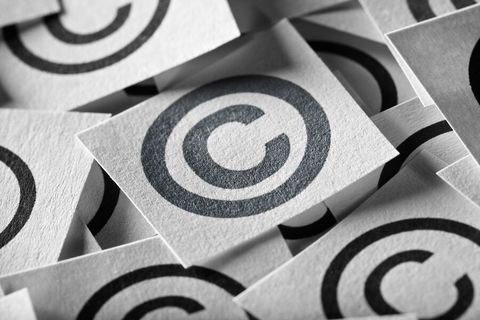CPSC Day at ICPHSO: Commissioner Comments
Client Alert | 5 min read | 03.20.15
At this year's annual meeting of the International Consumer Product Health and Safety Organization (ICPHSO), members of the Consumer Product Safety Commission (CPSC) and its staff were on hand to share some insights into Commission priorities in the coming year. For makers, sellers and distributors of consumer products in the U.S., some important highlights include:
Big Ticket Penalties
As a keynote speaker at the conference, CPSC Commission Chair Elliot Kaye set forth some of his goals going forward, and one of those goals is to make CPSC penalties "more reflective of what Congress intended" when it granted the CPSC additional penalty powers under the Consumer Product Safety Improvement Act of 2008 (CPSIA). Chairman Kaye voiced his concern that companies saw civil penalties as merely a cost of doing business that could be budgeted for in advance, and he indicated his desire for greater penalty values in the future to prevent any such incentive.
Compliance Programs
Compliance programs remain a recurring theme in the CPSC and regulatory world (see, e.g., here). The Commissioner urged that companies should have internal mechanisms in place to achieve a high degree of assurance about product safety. As a close corollary to compliance, he spoke of improved supply chain management, alluding to the "long chain of responsibility" that should ideally involve safety issues at the early design stages of the product. Other CPSC speakers suggested that robust compliance programs would serve, or should serve, as a mitigating factor in any enforcement penalty negotiation. However, the Commission remains taciturn on what exactly constitutes a sufficiently robust compliance program, and some suggested that enforcement situations won't occur at all if a proper compliance programs are in place. Unfortunately, this leaves companies in the position where the lack of a compliance program could be seen as potentially negligent or at least below the industry norm, but the implementation of a program offers little assurance of enforcement mitigation or of achieving the "right" compliance program.
Retailer Reporting Program Changes
The controversial "retailer reporting program" in which approximately one dozen retailers (and at least one manufacturer) participate by sharing weekly or monthly incident data with the CPSC is likely to face some changes. Hot debate arose about the value of the program, the fairness of having such a program for a select few companies, and whether information share in connection with the program constituted Section 15. (During the discussion, prior CPSC slides about the program were shared, including one reading "The Office of Compliance will not seek a civil penalty for failure to report any information actually given to CPSC staff under this model, whether triggered or not."). While the present Commissioners voiced differing views on the program and its history, it appears clear that the program will be evolving, if it remains at all. Some possibilities discussed at the conference included converting the program to an epidemiology program rather than a compliance branch program, or opening the program up to uniform application and admission requirements.
Recall Effectiveness and Social Media
In a panel on the implementation of product recalls, Tanya Topka, Fast Track Team Lead at CPSC, emphasized the importance of social media in getting recall information out to consumers. She offered illustrative examples, such as using a large message at a fast-food drive-in window to alert consumers to the recall of a children's novelty toy included in meals, timely and easily understood response posts to customer Facebook comments, and large graphics at the center of a product homepage. Ms. Topka described CPSC as flexible to novel approaches to messaging, offering the example of text alerts to consumers of a recalled product as yet another way to enhance consumer awareness and recall participation. Even if social media has not been a part of recall corrective action plans in the past, CPSC now expects at least some social media outreach as the norm. CPSC itself is also engaging its own social media platforms, and companies should be vigilant about the accuracy of twitter hashtags and be ready to negotiate limited character social media statements in addition to the traditional press release format. Best practices for recall publicity in current climate include: use of the same social media formats as used for the product's marketing, posts that remain for some time without being intentionally or unintentionally buried by other news, mobile platform viewing compatibility, and avoidance of "do not follow" codes.
"Hot" Products
Last, but not least, Chairman Kaye and other CPSC participants identified certain product categories of particular focus. At past ICPHSO events, products receiving such mention, like drawstrings in children's products, were indeed the subject of increased CPSC recall and enforcement activity in the subsequent year, so based on this year's comments, those involved with: button/coin batteries, pools/pool ladders, window blind cords, TV/TV stands (tipping issues), and those importing products requiring testing and certification for small parts, lead and phthalates, should be on high alert.
Contacts
Insights
Client Alert | 2 min read | 04.17.25
Will the Supreme Court review the Ninth Circuit’s unique Server Test for online copyright infringement? After the Ninth Circuit recently affirmed the Server Test, a photographer and copyright owner has requested certiorari. Petitioner-Plaintiff, Elliot McGucken, is a landscape photographer. Respondent-Defendant, Valnet, Inc., is the owner of a travel website located at “www.thetravel.com.” McGucken sued Valnet for copyright infringement when Valnet embedded on its site a number of links to McGucken’s Instagram posts. The district court, bound by the Ninth Circuit’s en banc decision in Perfect 10, granted Defendant’s motion to dismiss, finding that the Server Test foreclosed McGucken’s direct infringement claim as a matter of law, because Valnet linked to the images and did not store them on its own servers. The Ninth Circuit affirmed in a panel decision. McGucken now requests the Supreme Court to review the validity of the Server Test, which is unique to the Ninth Circuit.
Client Alert | 5 min read | 04.15.25
Is Section 230 Going to Change? The FTC, DOJ and FCC Signal Significant Change for Online Businesses
Client Alert | 4 min read | 04.14.25
Client Alert | 4 min read | 04.10.25
Hikma and Amici Curiae Ask Supreme Court to Revisit Induced Infringement by Generic “Skinny Labels”



